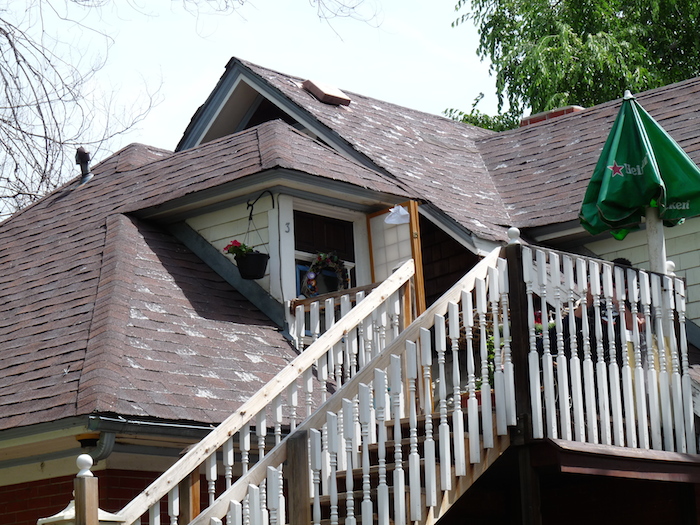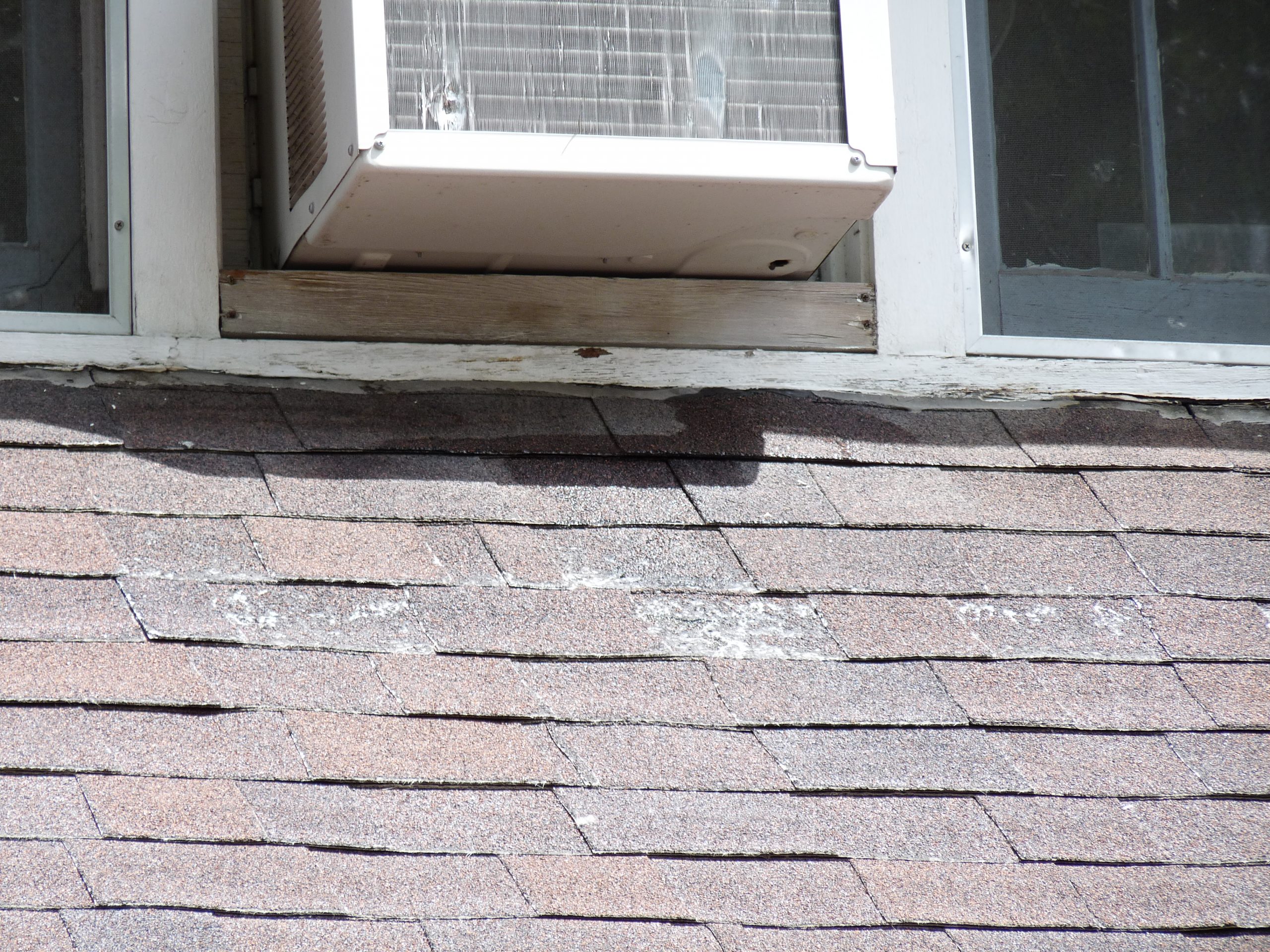FOOT TRAFFIC
Granule loss from foot traffic typically happens first at shingle butts. In the photos below, the doorway onto the roof offered easy access for kids.
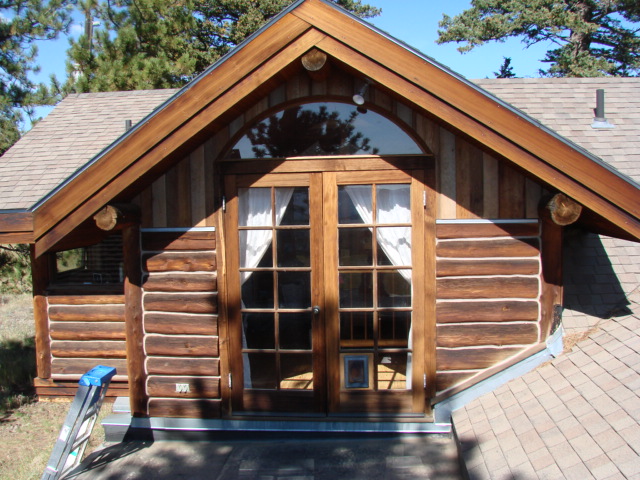
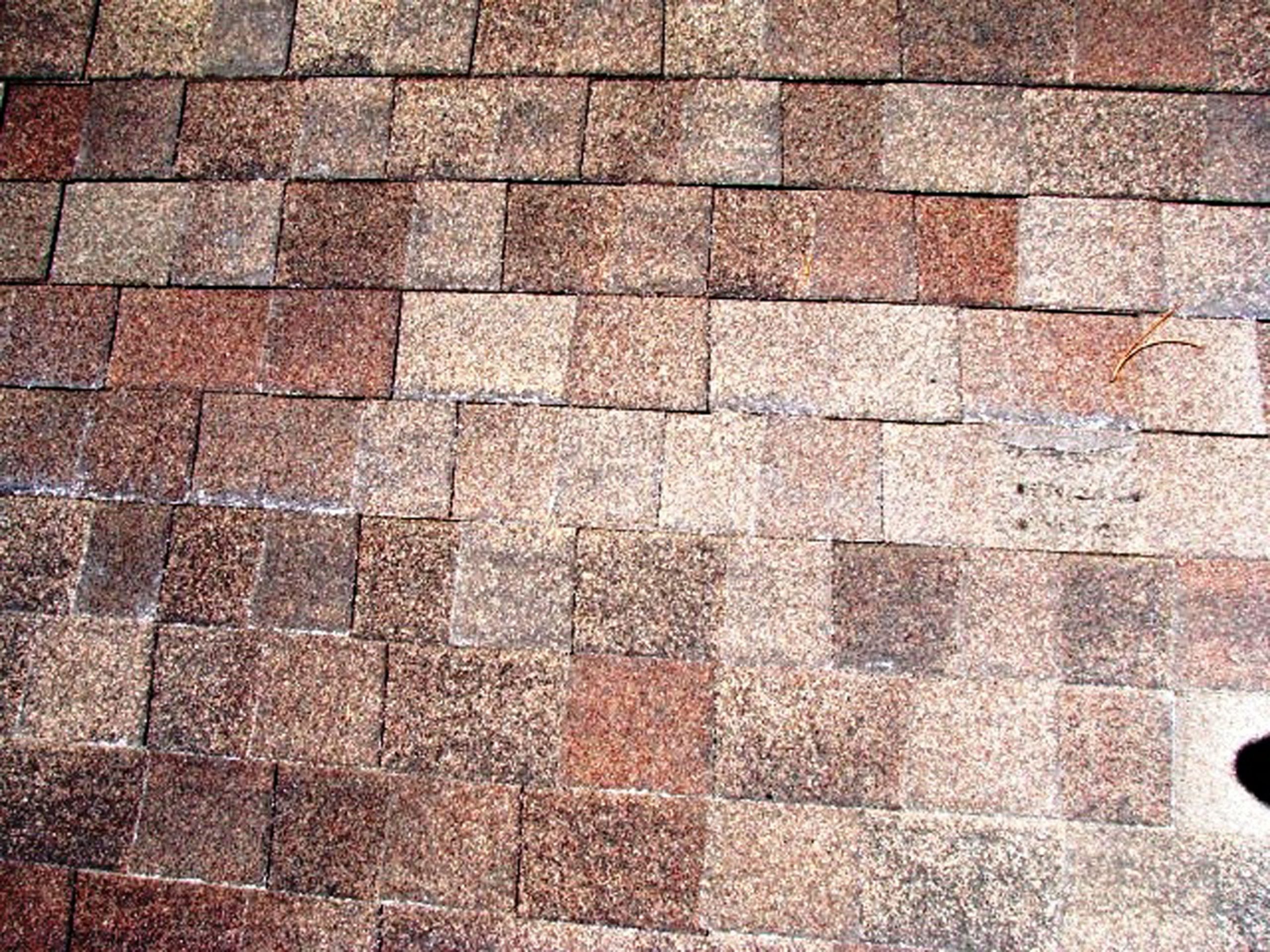
The white butts of shingles in the photo to the right are the fiberglass mat where granules and asphalt have been worn away.

...seen here close up.
MANUFACTURING DEFECT
Concentrated areas of granule loss, especially along paths of travel, indicate a possible manufacturing defect.
PRESSURE WASH DAMAGE
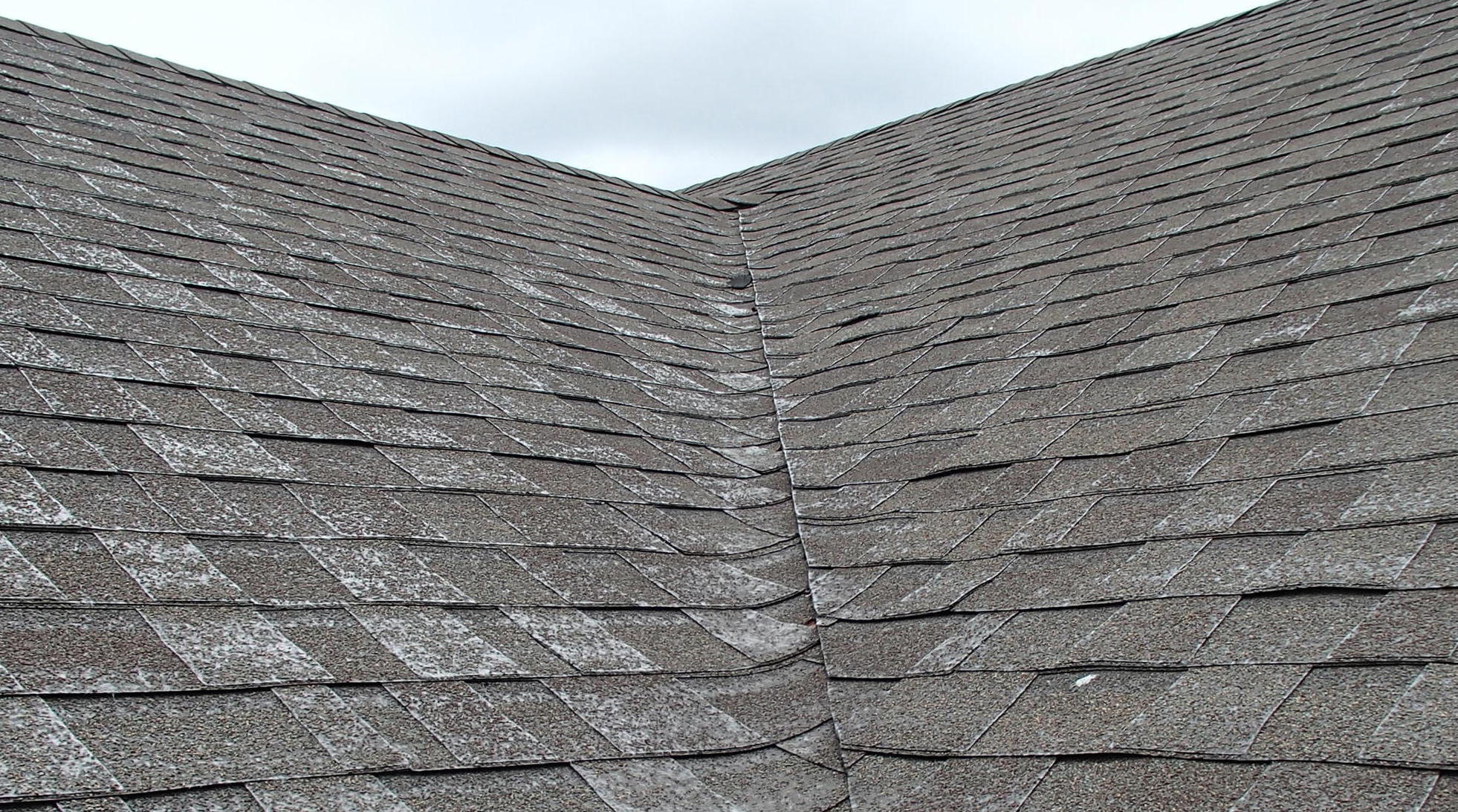
On roofs with granules lost during pressure washing, damage is likely to look uniform instead of being located along natural paths of travel.
HITCHIKERS
Newly installed roofs can sometimes shed significant amounts of granules. These granules- called “hitchhikers”- are interlocked with granules embedded in the asphalt surface during the manufacturing process, but are not themselves embedded. Runoff from precipitation will eventually wash them off the roof. Unless you see a corresponding, significant thinning of granules on the roof, his condition is not a defect.
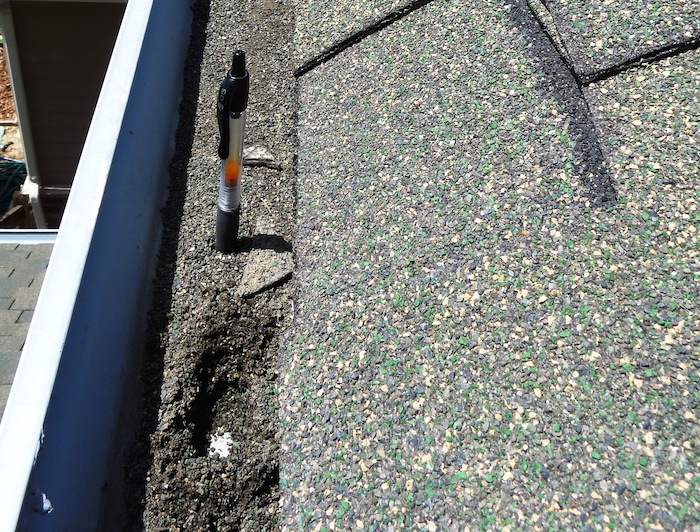
Hitchhikers should be cleared from the gutters to avoid gutter corrosion and impeding drainage.
UNIFORM GRANULE LOSS
Long-term, uniform granule loss is not considered functional damage by insurance companies, it’s considered part of the natural aging process. Uniform granule loss does not cause premature failure of the shingles or affect their ability to shed water. Granule loss that is uniform across the roof is usually a result of normal weathering. Over time, the bond between the granules and asphalt deteriorates, and granules will be loosened and carried away by runoff.
Prolonged exposure to hail can also loosen granules. With older roofs, even marble-size hail may loosen granules. The rate at which shingles lose granules depends on the quality of the shingles and the climate zone of the home on which they’re installed.
Premature failure of the bond between the granules and asphalt can be caused by poor-quality asphalt. It can also be caused by other conditions, like foot traffic (not uniform), blistering, batch problems or roof slope orientation.
Granule loss limited to slopes facing a particular direction may be caused by increased exposure to the sun or to storms. South- and west-facing slopes are more likely to lose granules due to increased thermal cycling and loss of volatiles that help keep asphalt from becoming brittle; a condition in which it is more likely to lose granules.

